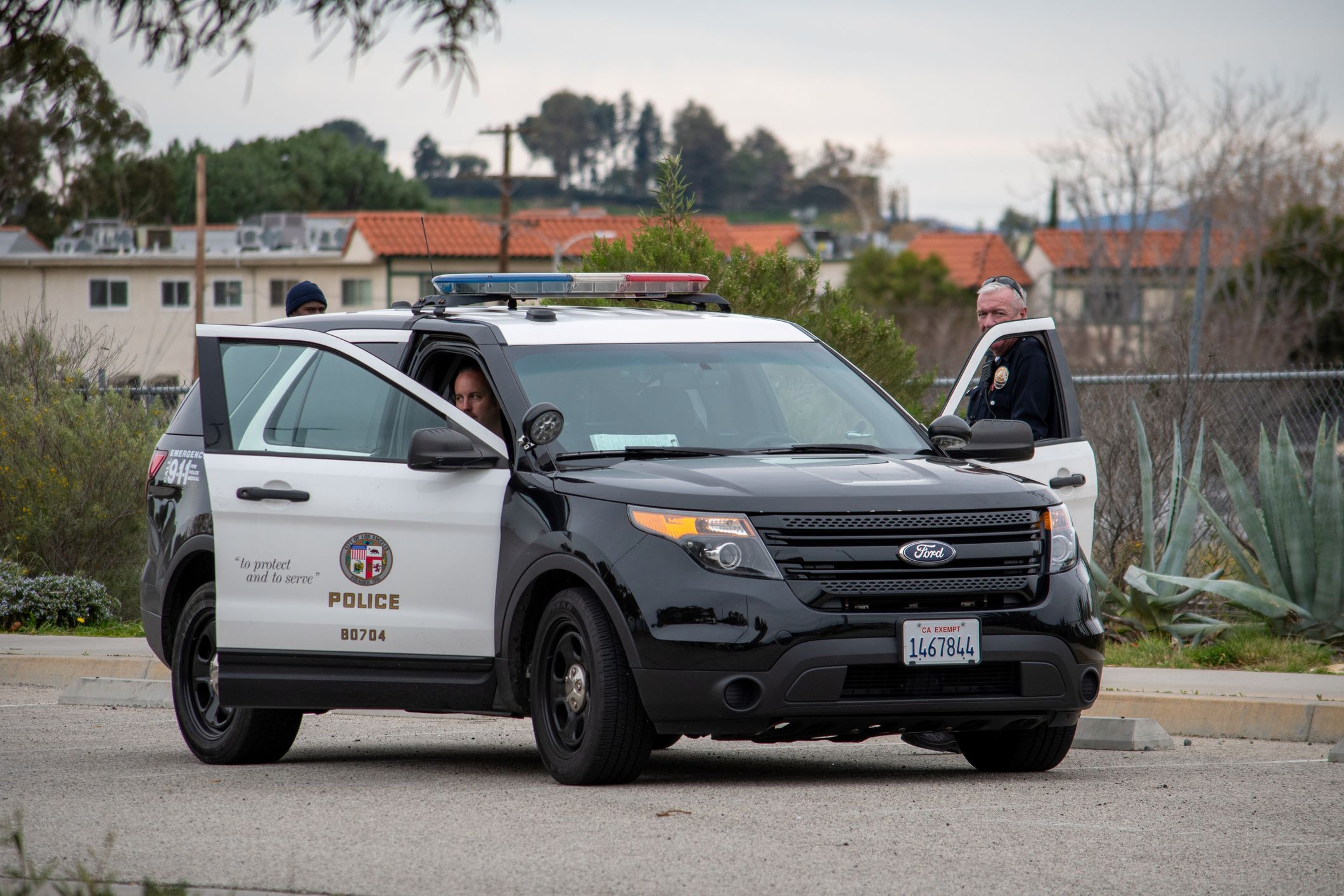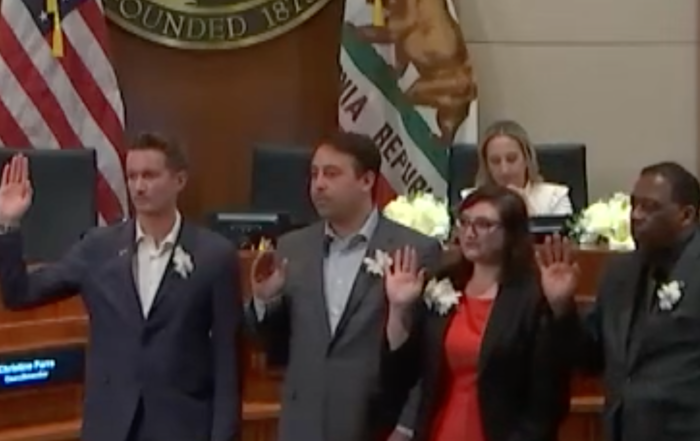City Controller Kenneth Mejia’s office has released a performance audit of the Los Angeles Police Department’s (LAPD) compliance with Assembly Bill 481. Signed into law on September 30, 2021, AB 481 intended to bring public oversight and accountability to law enforcement’s use of what the law defines as military equipment, including items such as drones, high-caliber firearms, grenades, and battering rams.
AB 481 requires law enforcement agencies to:
- Develop a military equipment use policy that includes a description of each type of military equipment in their possession.
- Submit this use policy to their governing body for approval, and obtain approval from the governing body within 180 days.
- Submit within one year of the approval of the policy, and then annually thereafter, a military equipment report that details the LEA’s military equipment inventory, usage, and costs for the prior year.
For the military equipment use policy requirements, LAPD did not fully meet five of eleven requirements and fully met the remaining requirements. The LAPD’s published military equipment use policy failed to provide manufacturer product descriptions, sufficiently detailed information about military equipment LAPD intended to procure or to provide information about the estimated annual maintenance costs for some of its military equipment.
AB 481 was also intended to address any adverse impacts that the deployment of military equipment has on the public by providing more transparency and oversight into the funding, acquisition, and use of such equipment.
The audit further states the use of military equipment by LAPD, including less-lethal projectile launchers against protestors, has led to serious injuries and multi-million dollar jury awards and settlements, including:
- $3.75 million which was awarded by a jury to a young man who was shot twice by military projectiles during a protest
- $1.5 million – a city settlement with a man who suffered testicular trauma when LAPD shot him in the groin with a 40-millimeter launcher reportedly causing one of his testicles to explode and require immediate surgery
- $1.25 million – a city settlement with a Marine Corps service member who suffered a traumatic brain injury and brain bleeding when LAPD shot him in the head with a beanbag shotgun during a protest
For the military equipment report requirements, the audit found that the LAPD failed to meet two of the eight requirements, partially met three requirements, and fully met the remaining three requirements.
“Of utmost concern and something that is critically important to public oversight and transparency is that the LAPD’s report is difficult for the general public to locate and that the LAPD’s outreach and education efforts regarding military equipment are limited,” the audit states. “Unlike other California law enforcement agencies that are providing necessary and valuable transparency to their communities, the audit found that the LAPD’s report does not disclose specific information about the use of military equipment.”
The audit also found that the LAPD lacks sufficient controls and safeguards to ensure that information published by the LAPD in AB 481 reports is accurate.
The law details specific requirements for a law enforcement agency’s military equipment use policy and the military equipment report. The report must include an inventory of all military equipment including a description, the total cost, and the purpose of each item. Additionally, the policy and report must be publicly available on the department’s website for as long as military equipment is available for use.
AB 481 also requires law enforcement agencies to hold at least one well-publicized and conveniently located public meeting within 30 days of releasing the report where residents can discuss and ask questions regarding the annual military equipment report and the law enforcement agency’s funding for, acquisition of, or use of military equipment.
The audit identified several elements of the LAPD’s report to obtain full compliance with AB 481, which are stated below:
City staff examined the implementation of AB 481 in police departments across the seven other most populous cities in California: Fresno, Long Beach, Oakland, Sacramento, San Diego, San Francisco, and San Jose. The audit found that Los Angeles was the only police department to not fully implement AB 481.
Physical Inventory Counts
City staff did physical inventory counts and found that inventory records matched with some items but not with others. The audit states the results of the physical inventory counts highlight the risks associated with the LAPD’s reliance on entities from across the department submitting AB 481 data.
Inventory verifications indicated that some of the LAPD inventory records systems that are used to track military equipment contain information quality issues. Those information quality issues appear to be more likely for less-lethal equipment and expendable ammunition.
City staff did not identify any inventory inaccuracies for firearms during their review. For example, the Gang and Narcotics Division was able to pull a report for Benelli Super 90 semi-automatic shotguns that were selected for verification. The report indicated the number of shotguns in the division’s possession, which shotguns had been issued to officers and the number of shotguns on-site at the Gang and Narcotics Division facility.
For less-lethal items that are not tracked in LAPD’s system, such as chemical agents and ammunition, inventory tracking systems appeared to vary in reliability. For the Defense 38 Technology Less-lethal gas Tactical Pocket Grenade, the Metropolitan Division of LAPD relies on an internal spreadsheet to track inventory. During the audit team’s site visit, the spreadsheet showed 120 grenades, but 143 grenades were counted during the physical inventory count.
“The Metropolitan Division did not have an inventory record for its Defense Technology 40mm Sponge Baton eXact iMpact Rounds and said that it relied on a physical inventory count for AB 481 reporting,” the audit states. “Metropolitan Division staff also explained that for AB 481 reporting, they conducted a physical count of military equipment on site, but did not count or have a specific method to account for inventory that was stored on SWAT trucks, or already checked out and assigned to officers in the field.”
In a letter to Controller Mejia’s office in response to the findings of the audit, Chief of Police Dominic H. Choi said the department in general agrees with the facts listed in the audit.
“However, we respectfully disagree with your interpretation of those facts and whether the department met the requirements of AB 481,” said Choi. “Specifically, all findings of “did not meet” and “partially met” we believe are a misinterpretation of the requirements of AB 481, and we believe we met the requirements of the law.”
Choi further stated LAPD’s AB 481 policy and report were vetted by the Police General Council of the City Attorney’s Office.
“As they have assured us that we have met all the legal requirements of AB 481, we do not need to follow any of your recommendations to continue to comply with the law,” said Choi.
The audit further states that the LAPD must ensure that it complies with all aspects of the law while making sure the information in the report is reliable and provides additional levels of transparency.
Photo by Glenn Highcove on iStockphoto.com
Stay informed. Sign up for The Westside Voice Newsletter
By clicking submit, you agree to share your email address with Westside Voice. We do not sell or share your information with anyone.








